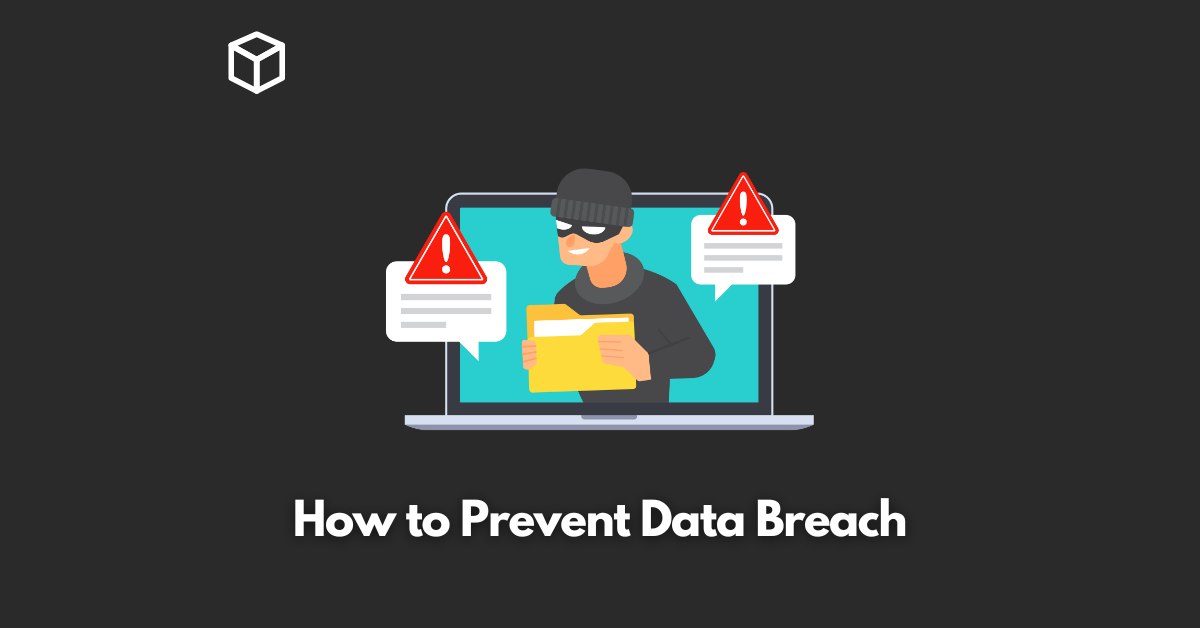Data breaches are a serious concern for organizations of all sizes.
A data breach is defined as an unauthorized access to or disclosure of sensitive information, and it can have severe consequences for both the organization and its customers.
That’s why it’s essential for organizations to take steps to prevent data breaches and protect sensitive information.
Identify and protect sensitive information
One of the first steps in preventing data breaches is to identify and protect sensitive information.
Organizations should determine what types of data they handle and classify them accordingly.
This can include personal information, financial information, and confidential business information.
Once the data is classified, access controls should be implemented to limit who can view and edit the sensitive information.
It’s vital to regularly review and update these access controls to ensure they remain effective.
By taking the time to understand what data is considered sensitive, organizations can take the necessary steps to protect it.
Implement strong passwords and multi-factor authentication
Another important step in preventing data breaches is to implement strong passwords and multi-factor authentication.
Organizations should encourage the use of strong, unique passwords for all accounts and implement multi-factor authentication, such as using a fingerprint or a one-time code sent to a mobile device.
This helps to ensure that only authorized individuals can access sensitive information.
Strong passwords and multi-factor authentication can be an extra layer of security to keep hackers out of your organization’s sensitive data.
Keep software and systems up to date
Keeping software and systems up to date is another crucial aspect of preventing data breaches.
Organizations should regularly update software and systems to fix known vulnerabilities.
Additionally, anti-virus and anti-malware software should be used to detect and remove malware.
This helps to ensure that the organization’s systems are secure and protected against known threats.
Outdated software can contain vulnerabilities that can be exploited by cybercriminals.
By keeping software and systems updated, organizations can ensure that they are not at risk of a data breach.
Train employees on security best practices
Training employees on security best practices is also crucial for preventing data breaches.
Organizations should regularly educate employees on the latest security threats and how to identify them.
Employees should also be trained on proper password management and how to spot phishing attempts.
It’s important to reinforce the importance of not sharing sensitive information and to emphasize the role that each employee plays in protecting the organization’s data.
By educating employees on how to protect sensitive information, organizations can ensure that everyone is working together to prevent data breaches.
Regularly back up important data
Regularly backing up important data is also an important step in preventing data breaches.
Organizations should keep copies of important data in case it is lost or stolen. These backups should be stored in a secure location, such as an off-site server or cloud storage service.
This helps to ensure that the organization’s data can be quickly and easily restored in the event of a data breach.
By regularly backing up data, organizations can ensure that their data is protected even in the event of a data breach.
In addition, organizations should have a incident response plan in place for how to respond in the event of a data breach.
This plan should be regularly tested and updated to ensure that the organization is prepared to respond quickly and effectively in the event of a data breach.
Conclusion
In conclusion, preventing data breaches and protecting sensitive information is crucial for organizations of all sizes.
- By identifying and protecting sensitive information
- Implementing strong passwords and multi-factor authentication
- Keeping software and systems up to date
- Training employees on security best practices
- Regularly backing up important data
- Having an incident response plan in place.
organizations can take steps to protect themselves and their customers from data breaches.
It’s important for organizations to take these steps to secure their data from cybercriminals and protect the integrity of their business.
By following these best practices and staying up to date with the latest security trends, organizations can ensure that their sensitive information is protected and secure.
Remember, data breaches can happen to any organization, but by taking the necessary steps to prevent them, you can minimize the risk and protect your business.




